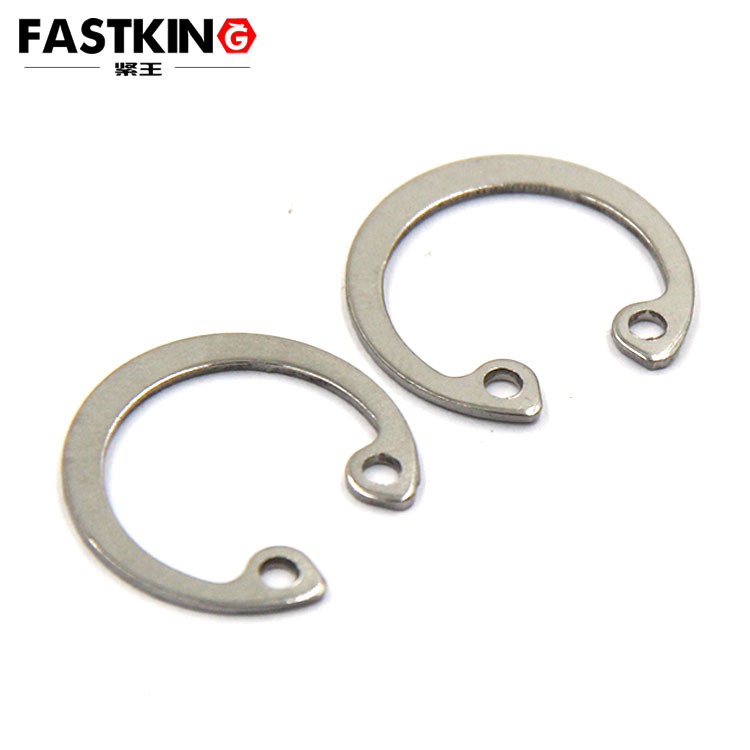style="font-size:16px;">English Translation of OCHIAI Product Description & Technical Details
Imported OCHIAI E-Type Elastic Retaining Ring Sets are extremely easy to install, significantly improving work efficiency!
Our company mainly supplies series products of the Japanese Ochiai OCHIAI brand: retaining rings, quick-release clamps, circlip pliers, circlip forks, cotter pins, etc., with a complete range of types! The materials include stainless steel and spring steel. We provide long-term supply of Japanese Ochiai OCHIAI products. Welcome to purchase!
Retaining rings, also known as snap rings, are divided into hole-use retaining rings and shaft-use retaining rings. They play a role in axial positioning and can prevent other components from axial movement. Most of their forming processes adopt sheet metal punching; their functional cross-sections are conical, and they are mostly in "linear contact" after assembly. Some large-size models are manufactured through wire winding forming and excess material punching processes, with regular rectangular cross-sections, and present "surface contact" after assembly.
-
Flat Retaining Ring: A detachable, basically flat washer whose inner or outer part serves as a rib for the outer or inner ring of a radial cylindrical roller bearing.
-
Middle Retaining Ring: A detachable ring in a double-row or multi-row roller bearing, used to separate and guide the rollers in each row.
-
Inclined Retaining Ring: A detachable ring with an "L"-shaped cross-section, whose outer part acts as an inner rib for a radial roller ball bearing.
A rib is a narrow shoulder parallel to the rolling direction and protruding from the raceway surface. It is used to support and guide rolling elements and keep them inside the bearing.
The fixation of components on the shaft is divided into axial fixation and circumferential fixation.
Methods of axial fixation include:
-
Fixation with shaft end retaining rings or conical surfaces
-
Fixation with shaft sleeves
-
Fixation with round nuts
-
Fixation with shaft shoulders or shaft collars
-
Fixation with elastic retaining rings
Retaining rings mainly play the role of axial fixation, among which the fixation method combining conical surfaces and retaining rings has high centering accuracy.
The retaining ring of a rolling bearing is equivalent to a movable rib. It is used to block the rollers and facilitate installation. The structures of retaining rings include flat retaining rings, inclined retaining rings and middle retaining rings.
-
轴向限位 / 轴向固定 (Axial Positioning/Axial Fixation): "Axial" refers to the direction parallel to the central axis of a shaft or hole. These terms describe the function of restricting components from moving along the axis, a core concept in mechanical assembly.
-
周向固定 (Circumferential Fixation): "Circumferential" relates to the direction around the axis. This fixation method prevents components from rotating around the shaft, distinguishing it from axial fixation (which restricts linear movement along the axis).

-
线性接触 / 面接触 (Linear Contact/Surface Contact): Describes the contact mode between the retaining ring and other components after assembly. "Linear contact" means the two parts touch along a line (common in conical cross-section rings), while "surface contact" means contact over a flat area (typical for rectangular cross-section rings), which affects load-bearing capacity and stability.
-
挡边 (Rib): A standard term in bearing technology. It specifically refers to the 凸起 structure on bearing rings that guides rolling elements (e.g., balls, rollers) and prevents them from falling out, differing from "retaining ring" (a separate fastening component).